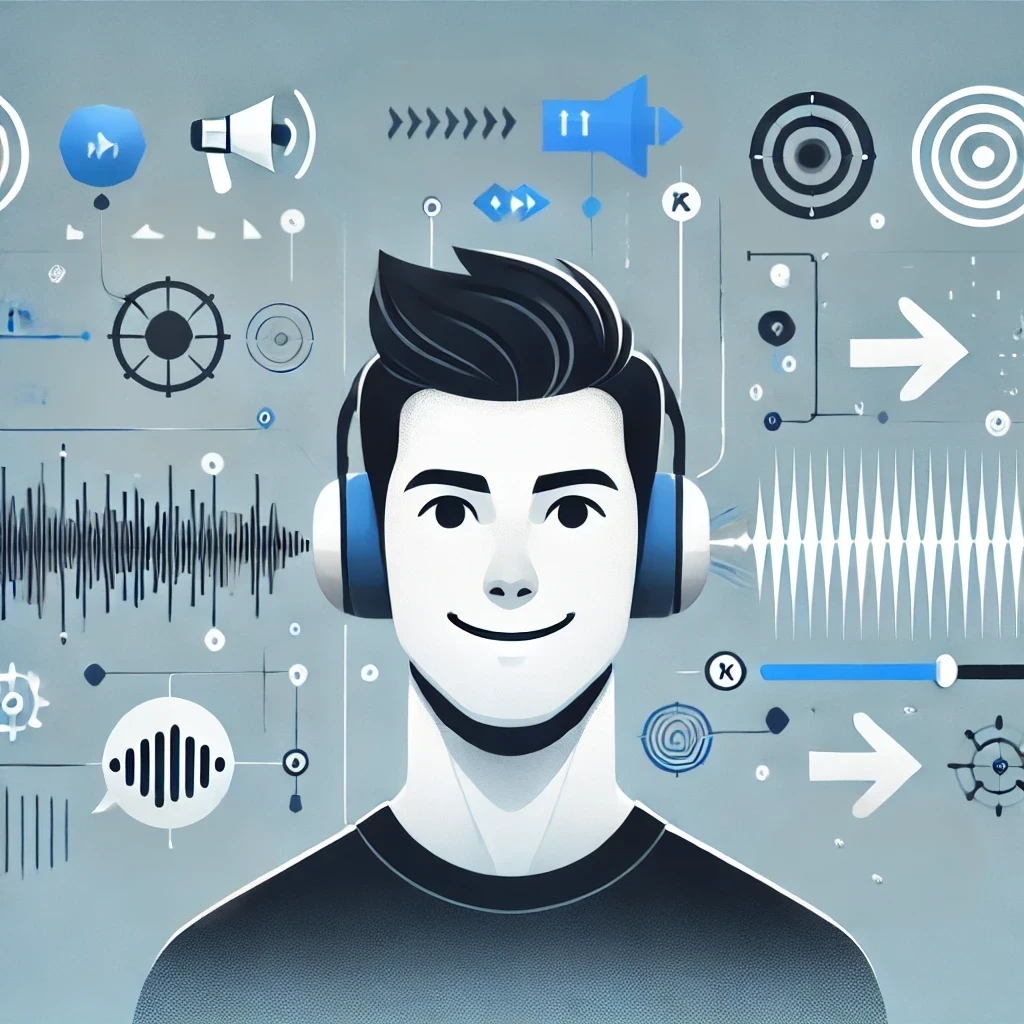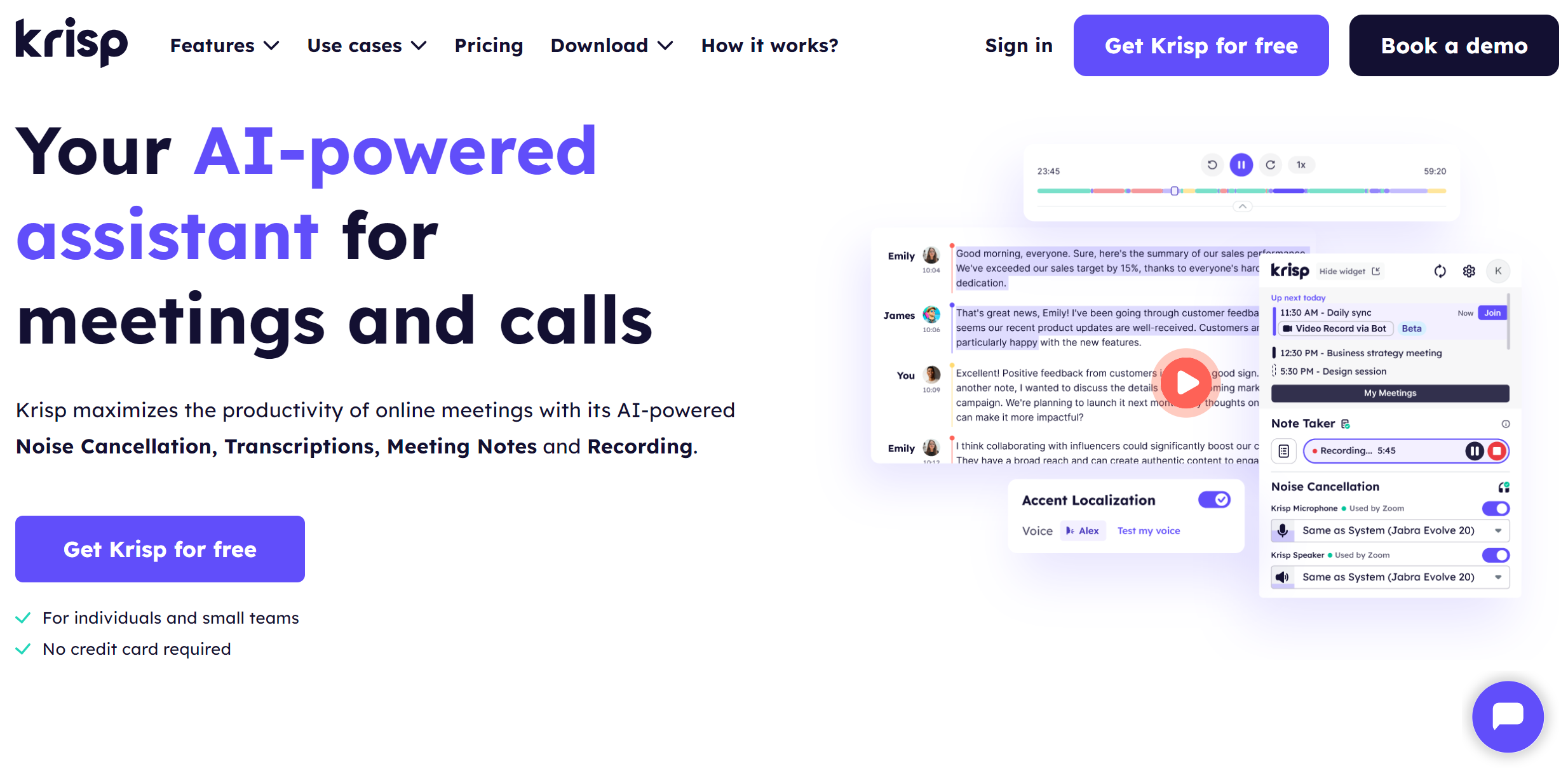Do you feel so focused on one task that you completely miss something happening right in front of you? That’s selective attention in action. It’s the brain’s way of filtering out distractions, but sometimes it leads to surprising blind spots.
From the selective attention psychology definition and examples to types and how to improve selective attention, this article covers everything. Moreover, it unveils how the Krisp AI Meeting Assistant helps better focus. So, let’s dig deeper.
What Is Selective Attention?

Let’s start with the definition of selective attention in psychology. So, the American Psychological Association defines it as concentrating on a single stimulus, leaving others ignorant.
It’s also called controlled attention, directed attention, or executive attention. This type of attention helps you prioritize the most essential information but can also cause you to miss other stimuli. What’s one selective attention example?
For instance, while driving, you focus so intensely on the road ahead that you fail to notice a billboard or pedestrians crossing.
And what is an example of selective inattention? Conversely, when texting while walking, you might be so focused on your phone that you fail to notice a red light or a person waving at you.
Your brain filters out external stimuli, prioritizing the phone over your surroundings, leading to selective inattention.
Another example is the Cocktail Party effect when you focus on an auditory message of interest in a room full of various conversations.
Our brain contains 10+ billion neurons and 10+ trillion synapses. They build networks and subnetworks of complexity beyond imagination. And each neuron can serve more than one function based on what task is required at each moment.
Types of Selective Attention
According to Explore Psychology, there are two types:
- Visual Selective Attention
The visual type refers to focusing on specific visual information while filtering out irrelevant stimuli. For example, when reading a book in a busy café, you concentrate on the words while ignoring movements and activities around you. Your brain processes what’s necessary to comprehend the text.
- Auditory Selective Attention
The auditory type refers to concentrating on specific sounds while tuning out background noise. For example, during a phone call at a loud concert, you can focus on the person’s voice, ignoring the surrounding music and chatter. Your brain filters out non-essential sounds to maintain focus on the conversation.
Thankfully, you can reduce background noise on the microphone to enhance your focus and attention.
Theories of Selective Attention

Here are three theories regarding the selective attention:
- Broadbent’s Filter Theory
Proposed by Donald Broadbent, this theory suggests that attention operates as a filter. It allows only one stream of information to be processed while blocking others.
Information passes through the filter based on physical characteristics, such as sound or location. Thus, it allows us to decide early what to attend to.
- Treisman’s Attenuation Theory
Anne Treisman modified Broadbent’s model. Treisman proposed that instead of completely filtering out unattended information, it gets “attenuated” or weakened. Important stimuli like hearing your name can still break through the filter.
This theory explains how some unattended information can still be processed at a lower level.
- Deutsch-Norman Late Selection Theory
The Deutsch-Norman Late Selection theory suggests that all incoming information is processed to a certain extent. And only relevant information is thoroughly analyzed for meaning.
Selection occurs later, based on importance or relevance. Thus, it allows for more flexibility in what gets processed consciously.
Selective Attention Vs. ADHD
You may wonder, “Is selective attention a symptom of ADHD?” Attention Deficit Hyperactivity Disorder (ADHD) is a neurodevelopmental disorder that affects attention, impulse control, and hyperactivity.
Specifically, people with ADHD may find it challenging to focus on a task, get easily distracted, or switch attention too quickly between stimuli. So, ADHD isn’t just about a lack of attention but rather the inability to control and sustain focus effectively.
For example, a person with ADHD may find it challenging to complete tasks and jump from one activity to another.
In contrast, selective attention allows people to concentrate on specific tasks while ignoring distractions. Unlike ADHD, this type of attention is a normal cognitive process that helps us filter information and focus on what’s important.
For example, someone with strong selective attention can tune out background noise and concentrate on a conversation. After all, the impact of background noise is secretly killing you, and you may not even notice it.
Divided Attention Vs. Selective Attention
The difference between divided attention and selective attention is that divided attention is the ability to focus on multiple tasks or stimuli simultaneously. Often, divided attention is called multitasking.
For example, someone may drive while listening to a podcast, splitting their attention between the road and the audio content. However, this can reduce the effectiveness of focus on each task, as cognitive resources are divided.
In contrast, selective attention involves focusing on one specific task or stimulus while ignoring all distractions.
For instance, imagine a conversation at a noisy party. People use selective attention to concentrate on their friend’s voice while filtering out background noise.
Did you know noise has color? And each noise color has its unique characteristics and effects. For example, white noise is often used to mask other sounds, as the Krisp AI Meeting Assistant’s Noise Cancellation feature does.
The Stroop Effect and Selective Attention
The Stroop Effect is a psychological phenomenon that demonstrates automatic and controlled processes, highlighting selective attention. Specifically, in a typical Stroop test, individuals are asked to name the ink color used to print a word.
When the word itself spells a different color (e.g., the word “blue” printed in red), it takes longer for participants to respond correctly. The reason is that reading the word is an automatic process, while identifying the ink color requires controlled, selective attention.
The Stroop Effect shows how selective attention overrides automatic responses and focuses on relevant stimuli despite interference.
Selective Attention Test
A Selective Attention Test is a psychological experiment that measures an individual’s ability to focus on specific information while ignoring distractions.
One of the most famous examples is the “Invisible Gorilla Test,” created by psychologists Daniel Simons and Christopher Chabris.
In this test, participants count the number of basketball passes made by a group. During the video, a person in a gorilla costume walks through the scene, but many participants fail to notice the gorilla because they are so focused on counting the passes.
This test highlights how selective attention can lead to “inattentional blindness,” where people miss apparent stimuli while focusing on something else.
These tests help researchers understand how we filter and process information and how distractions can affect our attention.
How to Improve Selective Attention

There are various techniques and practices that improve selective attention. Regularly practicing these techniques will make you more focused and perform tasks more effectively. Here are several effective methods:
- Mindfulness or Meditation
Mindfulness helps train your brain to focus on the present moment. For example, practicing meditation for 10-15 minutes daily can strengthen your ability to focus on a single task and ignore distractions.
- Eliminate Distractions
Creating a distraction-free environment, such as turning off phone notifications or working in a quiet space, helps maintain attention to the task. For example, when communicating in a noisy environment, eliminate background noise to focus better on the conversation.
- Task Prioritization
You can focus on one step at a time by breaking tasks into smaller, manageable chunks. For instance, when working on a project, focus on one section before moving on to the next. Over time, you’ll improve your attention.
- Cognitive Exercises
Brain-training games, like puzzles or memory tasks, help improve your ability to focus. For example, playing games that require concentration boosts mental flexibility and attention span.
Use Krisp to Improve Selective Attention and Productivity During Meetings

The Krisp AI Meeting Assistant enhances focus and productivity in virtual meetings through several powerful features. These include Noise Cancellation, Meeting Recording, Transcription and Summarization.
These features allow you to focus on the discussion staying away from external factors. Moreover, you don’t have to manage meeting details manually. Here’s how Krisp’s AI Meeting Assistant helps improve focus and attention:
1. Noise Cancellation to Improve Attention and Focus
Krisp’s Noise Cancellation filters out background sounds, ensuring clear communication during meetings. Users note that the Krisp AI Meeting Assistant’s noise suppression algorithm seems ten times more powerful than its competitors.
So, whether it’s barking dogs, noisy traffic, or even a loud coffee shop, Krisp blocks these distractions so you can focus on the conversation without constant interruptions.
2. Meeting Recording to Better Attention and Focus
Krisp’s automatic Meeting Recording feature helps you focus on the discussion, knowing you can revisit any part of the conversation later. This feature is handy for people in roles requiring attention to detail, such as project managers or consultants.
Instead of worrying about missing critical points, you can stay fully present during the meeting, knowing the recording will capture everything. Krisp’s AI Meeting Assistant uses excellent audio quality for recording.
3. Meeting Transcription to Improve Attention and Focus
Krisp’s real-time Meeting Transcription feature automatically transcribes conversations and provides concise summaries at the end of meetings.
So, you don’t have to multitask by writing notes while trying to stay engaged in the discussion. The Krisp AI Meeting Assistant uses stellar speaker recognition for meeting notes.
4. Actionable Meeting Summaries to Better Attention and Focus
Krisp’s Meeting Notes feature provides an AI-generated meeting summary at the end of each meeting. The latter highlights key discussion points and outlines action items. So you don’t have to worry about capturing everything manually.
Importantly, you can focus more effectively during the conversation instead of taking notes. And if you miss a few moments while handling an interruption, you can refer to the generated summary and avoid missing critical decisions.
5. Discreet, Non-Intrusive Operation
Unlike other AI meeting assistants, the Krisp AI Meeting Assistant doesn’t require a bot to join the meeting as a participant, which can be distracting.
Instead, it runs quietly in the background, capturing notes, recording, and filtering out noises without drawing attention to itself. Such capability makes maintaining the flow during the meeting easier. So participants avoid distractions like notifications from a meeting bot.
All these features improve selective attention, boosting productivity and efficiency.
Krisp’s AI Meeting Assistant is compatible with WinOS u MacOS and works well with videoconferencing apps like Zoom, Goole Meet, and Microsoft Teams.
Today, Krisp processes 75+ billion minutes of voice conversations each month, canceling noises, echoes, and voices in the background in real time.
Wrapping Up
Selective attention allows us to focus on essential tasks while filtering distractions. Understanding and managing it boosts productivity and decision-making in daily life. There are techniques like mindfulness meditation and task prioritization that help improve attention.
Moreover, the Krisp AI Meeting Assistant offers Noise Cancellation, Meeting Recording, Transcription, and Summaries to reduce distractions and cognitive load and enhance focus and efficiency during meetings.
Frequently Asked Questions




